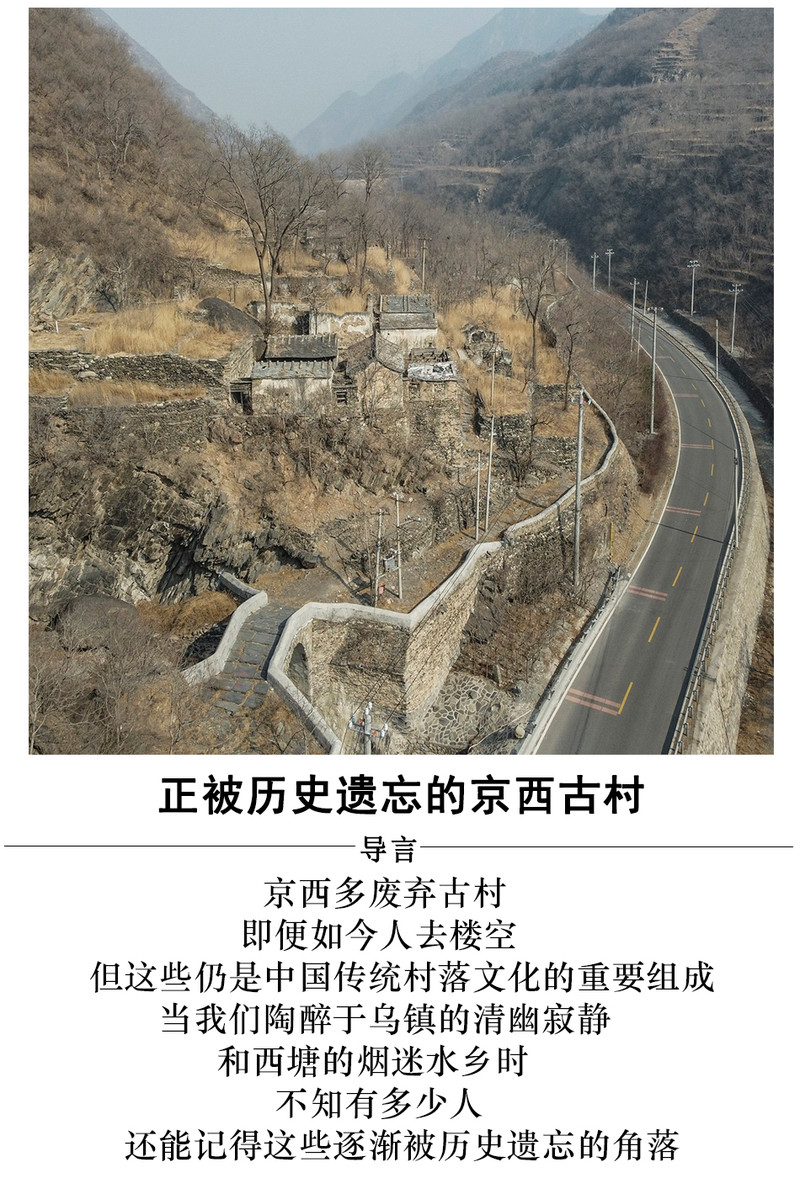Jingxi Ancient Village| A corner that is gradually being forgotten by history


01
Friends who often drive by themselves to the west of Beijing will definitely notice that some deserted ancient villages will always occasionally flash by the roadside.
I don't know if you've ever been curious,
Why are these abandoned villages concentrated in the western Beijing area?


You might say it's because of transportation problems or urbanization construction.
In fact, the real reason is...
The dragon veins in the mountains of western Beijing were destroyed by coal mines, causing the feng shui here to deteriorate. Since then, there have been many disasters...


The above is a joke!
However, the reason why there are so many abandoned ancient villages in western Beijing is indeed closely related to the thousands of years of coal mining history here.
02
When it comes to the history of coal mining in western Beijing, it can be said that it has a very long history.
There has been a lot of coal in western Beijing since ancient times. Coal mining has been recorded as early as the Liao Dynasty. At that time, it was mainly used for the firing of ceramics.


People's daily life is mainly based on wood, supplemented by coal. After all, firewood is easier to obtain than coal.


As population grows and woodland declines, coal becomes a perfect substitute for firewood with the same volume of higher calories.
03
By the early Qing Dynasty, coal began to replace wood and became the main fuel in Beijing.
At that time, coal from the mountains in western Beijing was transported into Fuchengmen along the ancient Beijing-West Road and supplied to the capital, so Fuchengmen was known as the "Coal Gate". Until the founding of New China, there were many coal warehouses outside Fuchengmen.


In today's Beijing, place names such as Meishi Street and Meishikou are still preserved, all of which are named after the coal business of that year.
In modern times, the coal industry in western Beijing has developed rapidly, and many modern large-scale coal mines have been built one after another. Coal output in western Beijing has reached its peak.


Entering the 21st century, with the transformation and upgrading of the Beijing area, coal mines in western Beijing have begun to stop production and withdraw.
In 2020, Beijing's last Datai coal mine officially bid farewell to the historical stage, and Beijing also ended thousands of years of coal mining history dating from the Liao Dynasty.
04
However, years of coal mining have led to the emergence of many goaf areas in the western Beijing area.
Goaf areas refer to the voids or cavities left under the mine surface after years of coal mining. People and buildings near the mountain will face the danger of falling into the goaf.


As a result, some villages had to move to new communities a few kilometers away. The original old village was uninhabited, and over time, the ruins of the old village we see now were formed.
In ancient times, these places were either places where troops were stationed or villages naturally formed due to commercial trade along the ancient road.


It is a pity that many century-old villages have developed into abandoned uninhabited villages.
Since these abandoned villages are scattered and small in scale, tourism development is of little significance, but as a destination for adventure and hiking, it is a good choice.
05
Walking among these ruins and broken walls, although everywhere is overgrown with weeds and dilapidated, you can still feel the torrent of history flowing slowly past you.
You can even imagine the lively scene here during holidays.


Sometimes, villages are particularly tough. They can inherit history and culture for thousands of years.
But sometimes villages are extremely fragile. People are empty, old houses are ignored, and they will soon be ruthlessly destroyed by nature.


When we are intoxicated by the tranquility of Wuzhen and the smoke-filled water town of Xitang, I don't know how many people can still remember these corners that have gradually been forgotten by history.

precautions
Abandoned ancient villages are distributed in Mentougou District and Fangshan District in western Beijing. For example, Tanzhesi Area, Datai Area, along the ancient road, and farther away Zhaitang and Yanchi areas, most of which are not marked on the map. You need to do your homework in advance or ask local friends, and remember to pay attention to safety when visiting.
Previous Article:Pinggu Jinhai Lake-Nordic Light Luxury Single Homestay B & B-The perfect integration of people by the lake and nature
Next Article:Qingliang Valley is new-High-altitude glass waterskiing and rafting is popular in summer
